Archery is the art of repetition, but long hours spent doing the same thing can get dull. Lucy O’Sullivan shares her top tips on keeping practice engaging
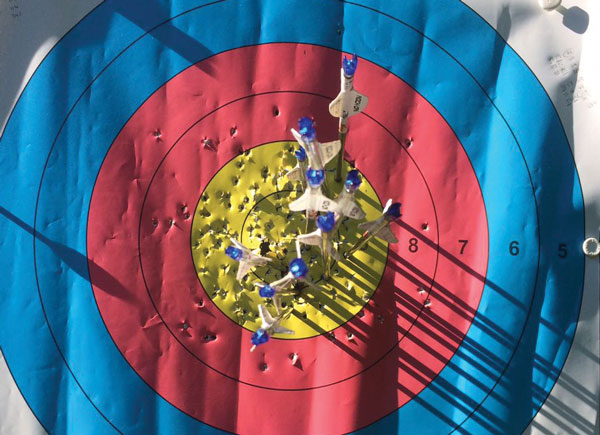
Practice can be repetitive, but it’s a great chance to really experiment and work out what your ideal shot feels like
Did you know that the more you practice the better you shoot? Well that is sometimes the case, though if you are practicing bad form you may not achieve the best results, so we must therefore remember what our “perfect technique” looks like and practise that.
I personally find practice boring – there, I said it! I have struggled for the last few years to find archery practice fun and therefore I have not shot that much, but something has changed recently and I find myself popping down to the garden to ping off a few arrows every couple of evenings. So, what has made the difference?
1. Having Direction
I find that actually having direction to my shooting has helped. As my coach says, “perfect practice means perfect archery”. I have worked out recently through tweaking my technique what works – and, on a bad day, what doesn’t – from the process of doing lots of shooting. I now have a list in my bow box as to what my perfect shot routine should look like. I also have a list of my bad 2010-2016 habits in my head. Every time I shoot I envision the good list, (and practice this in my mind when I don’t have a chance to physically pick up the bow) and try to recreate those shots every time, which is keeping me interested in shooting. I know that in competition the bad habit list may come into play, so I shared my niggling habits with my family, so when I text home during a competition they can actually say things like, “Make sure you lean towards the target (not back)”, “Keep your head up (don’t slouch)” and generally keep me away from the bad habit list. Focusing on the positive and trying to achieve a perfect shot every time I find particularly engaging.
2. Get help
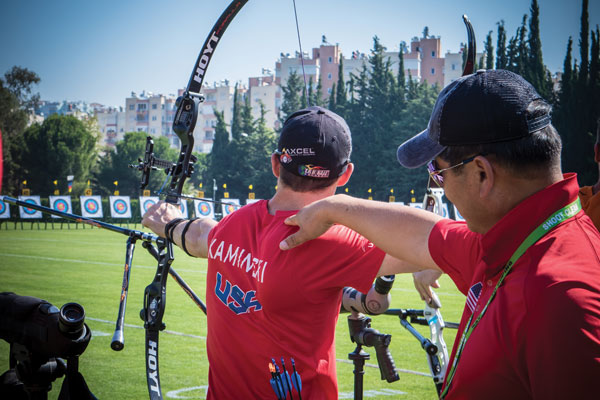
Coaching input can help keep you focused and give you something to work on
Of course, it’s difficult to find your direction unless you get someone to help you! I have not seen my coach John Dudley for years, and of course when I was seeing him I had drive, focus, and I was aware that everything I did, including hours of practice, would help me achieve my goals. Then, of course, come different challenges in your life and archery may loose focus for a few years (I still managed to make the team and was competing for Great Britain, but I have to say wasn’t practicing as much, as I thought “why bother if I’m still making the team?”). The best thing that could have happened to me was the GB scores increasing, and therefore the challenge recommenced; this was the best time to seek the wisdom of others.
Technical support as practice:
Getting help comes in various different ways. Help with your bow set-up is probably the easiest thing to start with, and most of the archers in your local areas will be great at helping you here. You can use this as your practice session, for example, and change the angle of your rest blade, map the groups on the target, shoot a round and see how it goes, and change it again tomorrow, do the same thing and see if that makes a difference. That will easily give you 3-6 dozen arrows per bow-part movement if you are tweaking things (remember to note down what you are moving so you can always move it back). By the end of the week you will have shot hundreds of arrows just playing with your arrow rest. The week after you can play with nocks and see what differences you can make there.
Technique support:
I personally have found this is the best thing to get help with. You can’t see what you are doing when you shoot, so how do you really know if bad habits are creeping in or not? Having an expert coach check your style out has been the best thing for my practice. You can really work on something on blank boss and then further distances, if you know what you have to do.
3. Challenge yourself
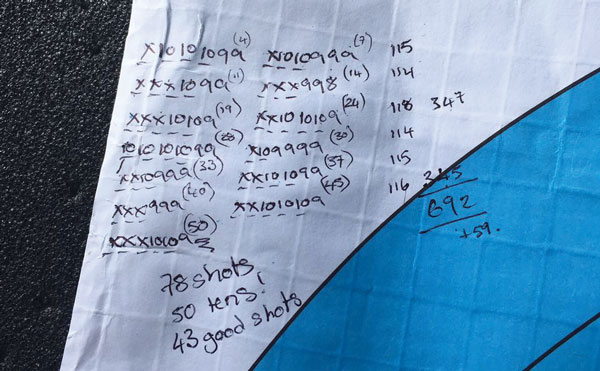
Recording your scores gives you something to try and beat next time
This is probably the easiest form of practice. Simply shoot some rounds – us compounds have to shoot 50m, so I shoot a lot at that – and I’ll shoot 3-6 dozen arrows and see what level I’m at, and then I try and beat myself. My target faces have loads of scores on them and the best dozens are now scores ready to beat! Another cool thing I like to do is put a tiny face on at 70m at the club, and try to keep everything in the gold. It seems hard, but after a few ends your eyes adjust and get used to the tiny sight picture.
4. Make a game out of it
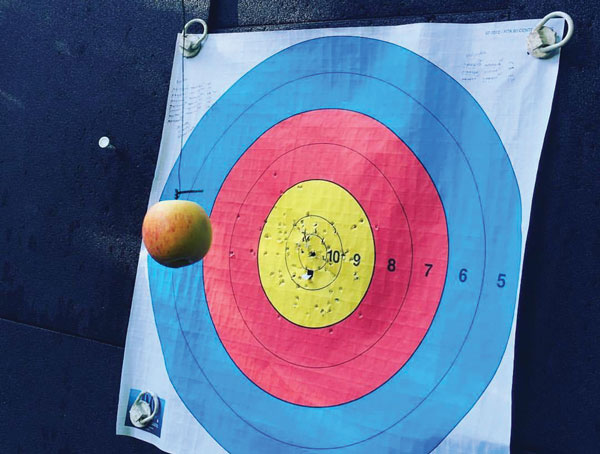
‘Finishers’ are short games you can play at the end of a session, and can be as serious as you want to make them!
The finisher – have you got 10 minutes left of your session? Try some fun exercises that keep you coming back for more. I have a footballer friend who is right footed, and before he leaves the pitch he tries to get five goals in a row with his right foot, which happens nice and easily. Then tries to get five goals in a row with his left (bad) foot and does not allow himself to leave the pitch until he does; if he gets two and misses, he starts over. You can use this type of “game” with archery. Don’t leave the field until you have got six golds in a row, for example, or six 10s in a row or even six Xs in a row – simply adjust for your target size and current ability level. Have a look at other sports and what they do to make their ‘finishers’ fun and adapt it for archery.
5. Get filmed
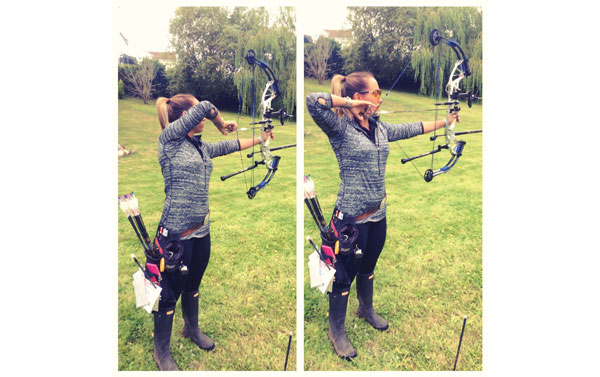
Invite some company to your practice sessions and ask them to film you for a few ends; as well as a record of your session, it helps you keep an eye on any bad habits
This has actually made my practice more fun, firstly because it means I have some company if someone is there filming me, and secondly I can see what I’m doing. Please do not underestimate the power of filming or photos – even taking a few selfies of your practice session just reiterates to yourself that you have practiced today. It makes it more fun knowing that there is visual proof to myself that I have had a good day, trained, and I have a few pictures for the memories about it.
This article originally appeared in the issue 119 of Bow International magazine. For more great content like this, subscribe today at our secure online store www.myfavouritemagazines.co.uk

